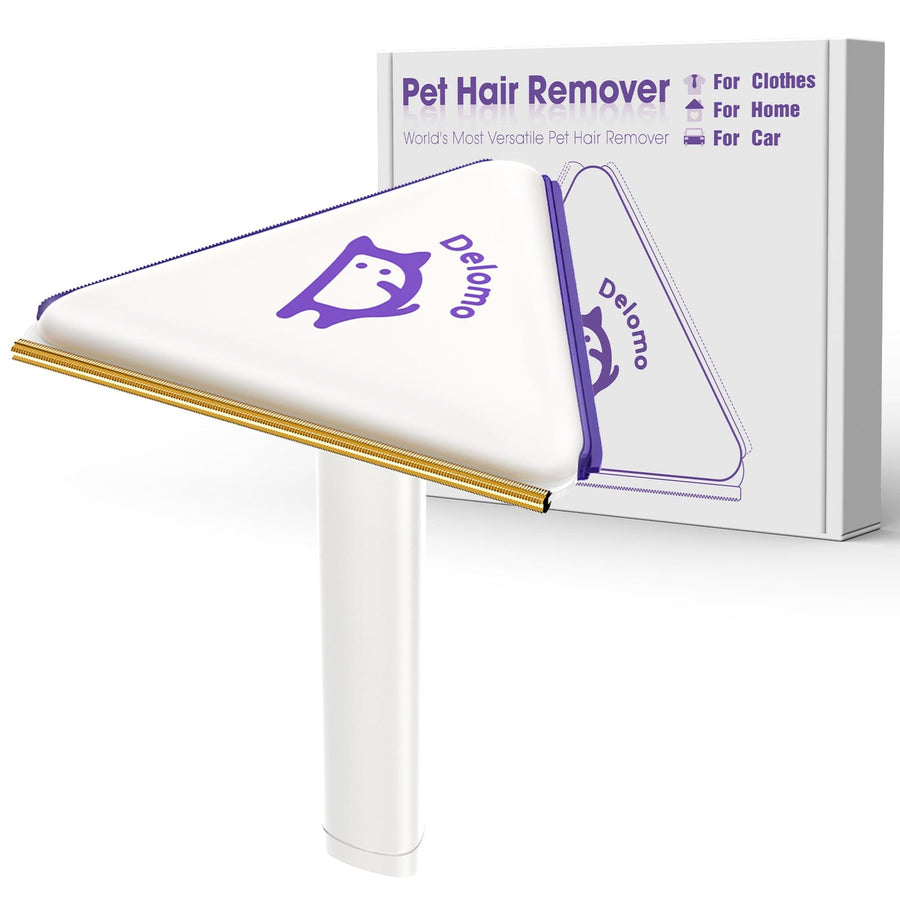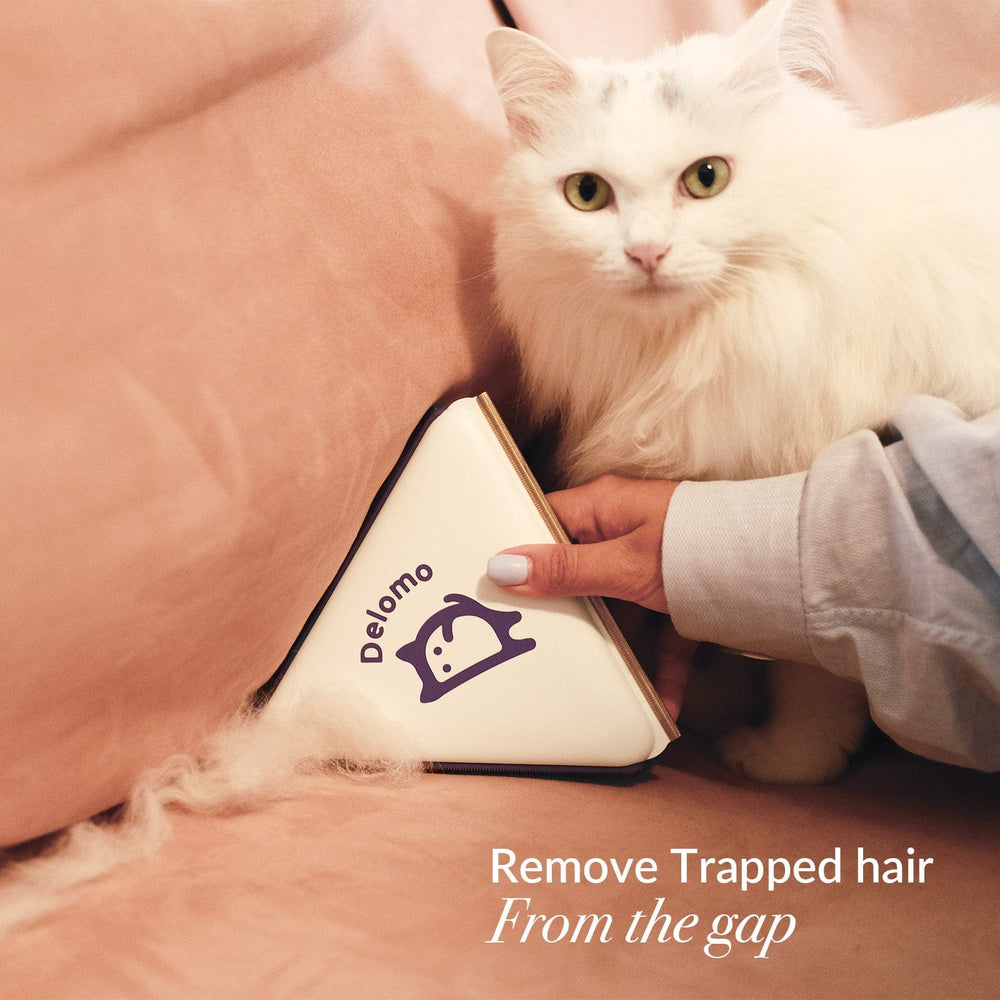How to Remove Pet Hair From Velcro
Every pet owner knows the struggles they have with their loved one’s hair. These hairs can get absolutely everywhere without the right processes and tools in place. They can get on one’s furniture, on the clothes, even on bed sheets.
One particularly hard place to get pet dander out of though is velcro. While useful, this material provides its own set of challenges when hairs are stuck on them.
Don’t worry though, as we’ll teach you the best ways to remove pet hair from velcro.
A Sticky Situation: A Closer Look at Velcro
Before we get into the nitty-gritty of how to remove pet hairs from this material, let’s take a quick refresher on what it actually is.
Invented in 1941 by Swiss engineer George de Mestral, this is a fastening device typically used to replace buttons or zippers. It consists of two strips of fabric, one with tiny hooks and the other with tiny loops. When pressed together, the hooks and loops latch onto each other, much like Velcro shoes.
This material is often used in products such as clothing, handbags, and even medical devices. Many people enjoy using this material because it’s strong yet flexible, making it perfect for a variety of applications.
One downside, however, is that it can be a lint magnet. The material’s nooks and crannies make it easy for pet hair and other debris to get stuck in it. Not only does this make it look messy, but it can also affect its performance.
The Best Ways to Remove Pet Hair from Velcro
Now that we know a little bit more about velcro, let’s get into the best ways to remove pet hair from this material.
Use a Lint Roller
One of the simplest and most effective ways to remove pet hair from any material is by using a lint roller. This tool consists of a handle with adhesive paper wrapped around it. As you roll the lint roller over velcro, the adhesive paper will pick up any pet hair that’s stuck to the material.
To use a lint roller, start by peeling off the protective layer of adhesive paper. Next, roll the lint roller over velcro in a back-and-forth motion. Be sure to apply gentle pressure as you roll to ensure that the adhesive paper picks up as much pet hair as possible.
Once you’re finished rolling, peel off the used adhesive paper and dispose of it properly. You can then repeat this process until all of the pet hair has been removed.
Use Duct Tape
Another quick and effortless removal solution is by using duct tape. This strong, sticky tape can be wrapped around your hand to creating a makeshift lint roller. As you run your hand over velcro, the duct tape will pick up any pet hair that’s stuck to the material.
To use duct tape, start by wrapping a piece of tape around your hand so that the sticky side is facing out. Next, run your hand in a back-and-forth motion. Be sure to apply gentle pressure as you go to ensure that the duct tape picks up as much pet hair as possible.
Once you’re finished, peel off the duct tape and dispose of it properly. You can then repeat this process until all of the hair has been removed.
Use a Vacuum Cleaner
If you have a vacuum cleaner with a brush attachment, you can use it to remove pet hair from velcro. The brush attachment will agitate the velcro, causing any pet hair that’s stuck to the material to loosen. The vacuum cleaner will then suck up the pet hair, removing it from velcro completely.
To use a vacuum cleaner: Start by attaching the brush attachment to the vacuum hose. Place the vacuum cleaner over velcro and turn it on. Slowly move the brush attachment back and forth over velcro until all of the pet hair has been removed.
Once you’re finished, turn off the vacuum cleaner and detach the brush attachment. You can then dispose of the pet hair properly.
Use a Lint Brush
Lint brushes are small, handheld brushes that are typically used to remove lint and pet hair from clothing. These brushes can also be used to remove pet hair from velcro. To use a lint brush, simply brush it over velcro in a back-and-forth motion. The bristles will loosen and remove any pet hair that’s stuck to the material.
Use a Rubber Glove
A rubber glove can also be very effective in taking out hairs from any surface. When using a rubber glove, simply put the glove on and attach it to the surface of your velcro. Afterward, pull it off. The pet hair should adhere to the glove, making it easy to remove.
Use Water
Believe it or not, water is another simple solution for the removal of pet hair. With water, simply wet your hands. Then, run them all over the material, specifically in parts that have a lot of hair. The pet hair should loosen and come away from the material easily.
Use an Air Compressor
An air compressor can be used to blow pet hair off of velcro. The air compressor’s gust of air easily blows the hairs away. Another plus is that it is simple to use. Essentially, one needs to just point and shoot. The compressed air will blow any pet hair that’s stuck to velcro right off.
Use a Hairdryer
Similar to an air compressor, a hairdryer can also be used to remove hairs from velcro. The hot air from the hairdryer will loosen any pet hair that’s stuck, making it easy to remove.
Be sure to hold the hairdryer a few inches away before turning it on. Slowly move the hairdryer back and forth over the area until all of the pet hair has been removed.
You can then turn off the hairdryer and dispose of the pet hair properly.
Unsticking a Sticky Situation
Hair from our pets gets everywhere, even in unsuspecting places like velcro straps. The problem here is that this material is that the hairs are already quite sticky, as is its nature.
However, with the tips we’ve presented, we’re sure that this sticky hair situation can be solved easily.



LINT ROLLER DOES NOT WORK
A vacuum cleaner with a brush attachment can be used to remove pet hair from Velcro. Simply run the vacuum cleaner over the Velcro, using the brush attachment to loosen and remove the pet hair.
Leave a comment